#compact mirrorless camera
Text
Save Your Tired Spine From Really Big Bags: Lowepro Trekker Lite SLX 120 review
The 90s are back -- and fanny packs will really save your spine.

View On WordPress
#camera bag#Compact Camera Bag#fanny pack#lowepro#Lowepro Trekker Lite SLX 120#mirrorless cameras#Sling Bag#waist bag
0 notes
Text
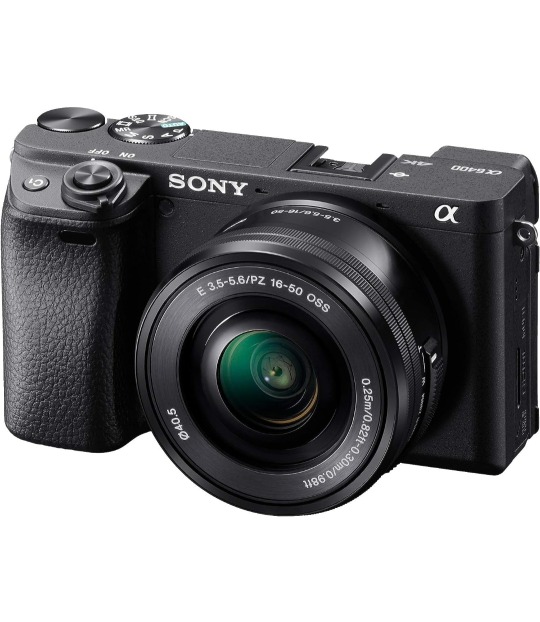
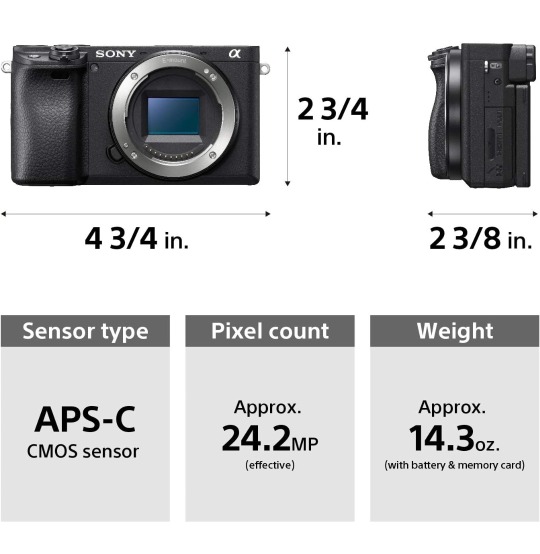

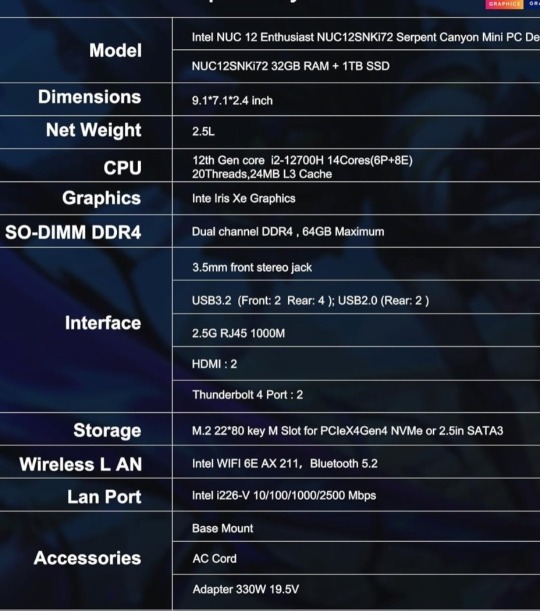
Website is in the tags!
#zoom in to see the specs#which item poll#pc#camera#photography#photographer#camera stuff#electronics#polls#poll game#random polls#poll blog#gimmick blog#amazon
20 notes
·
View notes
Text
Here I am pushing forward my Photographer Rooster agenda.
This is part 1 of ?
I am a little Hangster/Sereshaw biased so I hope you don’t mind.
—
Bradley loves going on these “photography strolls”, as he calls them. Wandering around old suburbs outside town, or pacing along the beachside near his little bungalow, bathing in the golden hour, with his dad’s Leica M6 strapped around his neck.
Everyone knows it.
If he is not answering his phone, nine times out of ten he is somewhere with his camera shoved up his face, or holed up into his studio editing images while blasting ABBA’s greatest hits.
All the Daggers, at some point or another, have joined him.
And they did absolutely hate it.
Bradley would spent hours pacing around the same spot, or remaining so far behind that everyone started to call him “Slow Ride”.
Except for Jake. Well he would still call Bradley “Slow Ride” like the others do, but he actually didn’t mind tagging along with photographer-Rooster, jumping in his shoots and making the worst faces possible.
It was nice, it shouted his thoughts away for a while. He liked the slow peace of the strolls, the hazy light of the late afternoon. Or the way Bradley squeezed his eyebrows together while focusing on catching the perfect shot, or the little “yes!” he whisper-shouted every time he successfully framed the perfect moment. Or the way he would proudly shove his Fujifilm in Jake’s face, stars in his eyes, showing him a picture he was particularly satisfied of.
So when Rooster asked the Daggers group chat if anyone wanted to keep him company on a stroll that Sunday, Hangman was the only one who agreed. Instantly.
He was a little disappointed in the others, Bradley had spent days talking their ears off about how he just got a new Portra 400 film in the mail and couldn’t wait to load it. He was so excited, already planning where to go and everything… how could they let him down like that? So he offered.
—
So at 5:00 AM on Sunday morning, Hangman was pulling his Jeep in Bradley’s driveway cursing at himself and the fellow pilot.
Rooster decided that he wanted to catch the sunrise light, and went ballistic planning a brief trekking tour somewhere not too far halfway up the Californian trails. Departure time: 5 AM sharp.
A crime. But again, Jake offered.
“Bagman” greeted him Rooster opening the passenger’s door. He was sporting a long sleeve denim shirt on top of his usual white undershirt, dog tags in plain sight. His Leica was already strapped securely across his chest, while one of his Fujis was sitting comfortably in his hands. His small backpack at his feet.
He was a damn sight.
Hangman had eyes okay, and Bradley was a damn fine man. But he was also a great pilot, a unsurprisingly amazing teacher, and a really impressive photographer.
Jake was starting to have it bad.
Over time, he has learned to recognize all of Bradley’s cameras. He owned four: two mirrorless — a Fujifilm X-T3 and a Fujifilm X-Pro2 —, a compact Fujifilm X100f, and his dad’s Leica M6. A lot of Fujis, yes, the perks of being stationed for a while in Japan: full access to cameras at cheaper prices.
Jake’s favorite one was the X100f, it was beautiful and looked less intimidating than the others, almost easy to use even for someone like him that didn’t know shit about photography. It was also the one that Rooster took everywhere. And it was exactly the X100f that Bradley was grasping nervously but still with gentleness.
“Bradshaw” responded Hangman starting the Jeep “remember me not to indulge anymore your photography extravaganza”.
“Whatever Hangman, I know you secretly love it” laughed Bradley tapping the right address into Maps.
They drove in comfortable silence for about fifteen minutes, when Jake decided to ask Bradley about the cameras.
“So what’s with the X100f? I thought you wanted to shoot film? With the Leica?” in his peripheral view he saw Bradley widening his eyes almost in disbelief. Did he say something wrong? Did he insulted his cameras in some way?
“I…brought the Fuji as a backup, in case I wanted to shoot more casually” answered Rooster once regained his composure “but if you want to, I was thinking you could’ve tried taking a couple of shoot with it? I’ll show you how” proposed almost sheepishly the older pilot.
Now it was Hangman’s turn to wide his eyes in disbelief. What? “Are you seriously trusting me with it?” asked the younger stopping at a red light and turning completely to Bradley.
He couldn’t believe it. Rooster was willingly sharing with him his most treasured passion, that thing that deeply linked him to his long gone dad. Bradley was willingly putting in Jake’s hands one of his most valuable possession. Bradley was willingly showing Jake his world, teaching him how to read his heart.
“I mean, I trust you enough to be my wingman, so why not?”
Damn. It would be a hell of a day for Jake’s heart. And it was just barely after 6:00 AM.
—
That’s it for now.
Let me know what you think about it.
If someone want to write something too about Photographer Rooster please tag me, I would love to read it.
(Before I forget, English is not my main language so be kind)
#hangman#hangster#sereshaw#bradley bradshaw#top gun#top gun maverick#rooster#hangman x rooster#rooster x hangman#photographer rooster
28 notes
·
View notes
Note
Do you have a favorite camera for all the outdoor and landscape pictures?
Yes I do!
I shoot mainly with a Canon R5 with the RF 15-35mm F2.8 lens. It’s a great camera for backpacking/hiking/traveling since it’s mirrorless, making it more compact than a traditional DSLR.
2 notes
·
View notes
Text
Sage advice regarding the Olympus OM-D E-M1
As you can probably tell this was written by AI as a test. I do think the camera does have viability for street work. Olympus is a pretty good workhorse.
Street photography is a genre of photography that requires a camera that is compact, lightweight, and capable of capturing high-quality images in a variety of lighting conditions. The Olympus OM-D E-M1 is a mirrorless camera that is well-suited for street photography, thanks to its advanced features and compact design.
One of the key features of the OM-D E-M1 is its autofocus system. The camera uses a hybrid autofocus system that combines both contrast detection and phase detection autofocus. This means that the camera can quickly and accurately focus on subjects, even in low light conditions.
Another advantage of the OM-D E-M1 is its compact size. The camera is smaller and lighter than most DSLRs, making it easier to carry around for long periods of time. This is essential for street photography, where being inconspicuous is often key to capturing candid moments.
The OM-D E-M1 also has a built-in electronic viewfinder (EVF) that allows you to preview your shot before you take it. This is especially useful when shooting in bright sunlight, where it can be difficult to see the LCD screen on the back of the camera. The EVF also allows you to see the effects of any exposure adjustments in real-time, which can help you create better images.
In terms of image quality, the OM-D E-M1 is capable of producing high-quality images with its 20.4-megapixel sensor. The camera also has a wide ISO range (up to 25,600), which means that you can shoot in low light conditions without having to worry about excessive noise in your images.
Finally, the OM-D E-M1 has a number of advanced features that are useful for street photography. These include a high-speed burst mode (up to 60 frames per second), built-in Wi-Fi for sharing images on the go, and a variety of creative shooting modes that allow you to experiment with different effects.
In conclusion, the Olympus OM-D E-M1 is an excellent camera for street photography. Its compact size, advanced autofocus system, and high-quality sensor make it a great choice for capturing candid moments on the streets. Whether you're a beginner or an experienced photographer, the OM-D E-M1 is definitely worth considering for your next street photography adventure.
7 notes
·
View notes
Photo

SS Sir Walter Scott (digging through the archive)
Digging through the archive: Steamboat SS Sir Walter Scott at Loch Katrine.
Trip to Scotland, late April 2019.
Steamboat Sir Walter Scott measures 115 gross register tons, is 110 feet (34 metres) long and has a 19-foot (5.8-metre) beam. She is powered by the original three-cylinder triple-expansion steam engine made by Matthew Paul & Company, Dumbarton, and has two locomotive-type boilers which until the end of 2007 were fired by solid fuel fed into the firebox by a stoker. In a refit at the end of the 2007 season, the boilers were altered to run on biofuel. During this refit, the superstructure was rebuilt and a forward deck cabin was added. The vessel has a crew of five. Read more about the boat on Wikipedia.
Loch Katrine (Gaelic: Loch Ceiteirein or Loch Ceathairne) is a freshwater loch in the Trossachs area of the Scottish Highlands, east of Loch Lomond, within the historic county and registration county of Perthshire and the contemporary district of Stirling. The loch is about 8 miles (13 km) long and 1 mile (1.6 km) wide at its widest point and runs the length of Strath Gartney (Gaelic: Srath Ghartain). Read more about the loch on Wikipedia.
Taken with Panasonic GX7 digital mirrorless camera and Panasonic G Vario 35–100mm F4–5.6 compact tele-zoom lens.
#IFTTT#Flickr#travelphotography#travel#scotland#2019#april#spring#uk#beforethebrexit#nature#digital photography#steamboat#lake#Loch Katrine#microFourThirds#Panasonic#Lumix
2 notes
·
View notes
Text
A series of photos created using the digital zoom feature (crop tool) of my photo-editing software on a full frame sensor (Nikon D850) photograph to replicate the field of view provided by common camera sensor sizes.
Full frame: roughly the same size as ye old 35mm film cameras.
Field of view: 100%
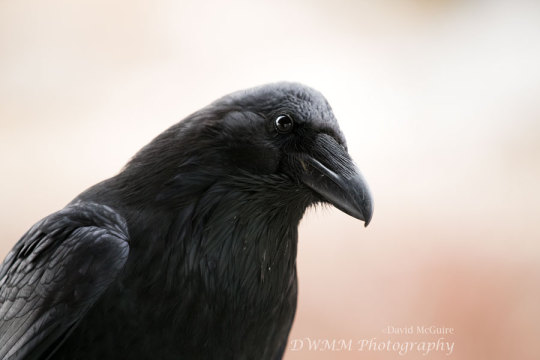
APS-C: the "crop sensor" body for cameras with interchangeable lenses (DSLR or mirrorless).
Field of view: ~66.67%

1-inch: found in some Point&Shoot cameras
Field of view: ~37%
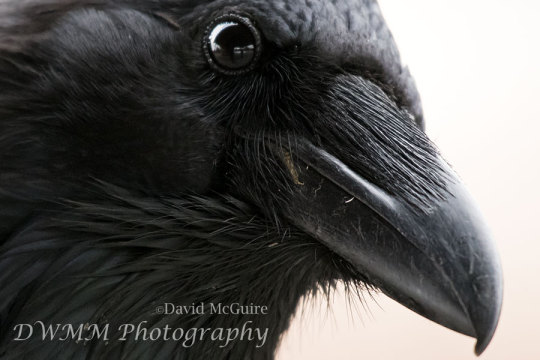
1/2.3-inch: common for compact and "super zoom" Point&Shoot cameras. Also, cell phones.
Field of view: 18%
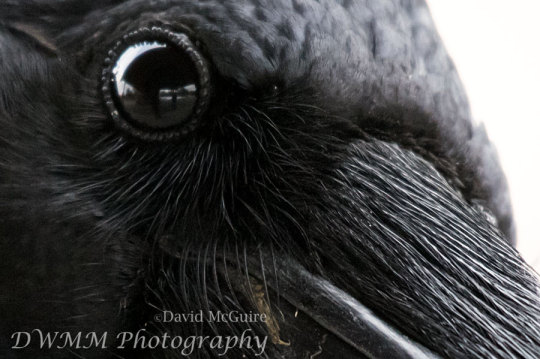
1/3.6-inch: shows up in secondary cameras on some cell phones.
Field of view: 11.5%
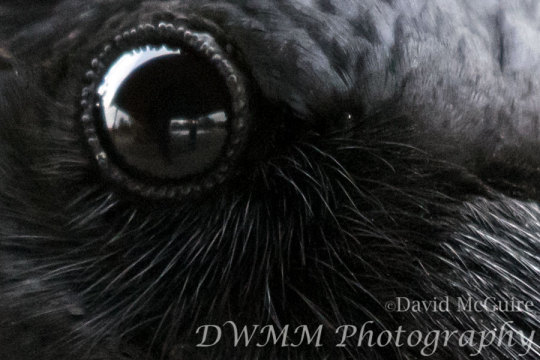
Despite the frequency crop factor is associated with "extra reach" in photography circles, it's actually all about the change to field of view.
So when a camera has tech specs of "4.3-357mm (angle of view equivalent to that of 24-2000mm lens in 35mm [135] format)" on the company website or in a review (more likely just shortened to 35mm equivalent of 24-2000mm), it's not saying the camera has the equivalent magnification. Just that you are magnifying a smaller part of the view.
In more generalized birder terms the ~0.01-7x doesn't change to a ~0.5-40x, but you'll see the same amount of the landscape as that higher magnification.
And this can absolutely work for someone depending on what the photos are for. Cameras get heavy and big (my gear takes up a full size backpack and body w/ lens is ~9lbs/4kg to hold awkwardly steady), and ones with smaller sensors are smaller and lighter.
#get the gear that works for you#but also know what the marketing department is saying#marketing always wants you to think whatever benefits their sales most#extra reach like cardboard tube binoculars#language matters#camera stuff#raven#digital zoom is a lie of a feature
2 notes
·
View notes
Text

130416
[Text] 나중에 내가 돈 잘벌면 우리 방탄이들한테 카메라 사주고싶다 랩모니는 하이엔드가 어울릴거 같고 진형이랑 제이홉은 미러리스 정국이랑 지민이는 똑딱이 :) 난 멀리서 흐뭇하게 초망원으로 방탄이들 찍어야지 :D 아버지의 마음으로 캬캬
[Trans] Later when I make good money I want to buy our little Bangtan cameras. I feel like high end would suit Rap Monnie. Mirrorless for Jin hyung and J-Hope. Compact for Jungkook and Jimin :) I will shoot our Bangtan with a super telephoto camera from a distance :D with the heart of a father haha
Translated by Jae (@ intl_k_army) on Twitter.
Commenter's tweet
[Text] 지민이는 왜 똑딱이야 ㅋㅋㅋㅋㅋㅋㅋㅋ 근데 어울린다...ㅋㅋㅋㅋㅋㅋㅋㅋㅋ...ㅋㅋㅋㅋㅋㅋㅋ
BTS' reply
130416
[Text] 꼬맹이들은 똑딱똑딱해 :)
#bts_twt#2013#april#130416#pre-debut#translated#untranslated#OP_MY#bts suga#min yoongi#yoongi#min yoongi 2013#yoongi 2013
3 notes
·
View notes
Text
Different Styles of Cameras
Throughout my unprofessional career in photography I have used 3 different kinds of cameras and they all served different purposes when learning throughout the years. In this post I am going to be covering these 3 cameras, their uses, pros/cons, and who should be using them. I hope this helps guide you in the right direction when choosing a camera for yourself!
GOPRO
GOPRO’s have become a very popular choice of camera in recent years due to their size, durability, price, and surprisingly amazing quality. These cameras are so small that you can place them anywhere such as on drones, surfboards, and helmets while also having hands free shooting to get unique action angles. Another cool perk about the GOPRO is that they are all waterproof or come with waterproof housing so you can literally take this camera anywhere. The first camera I ever started shooting on was a GOPRO HERO 3, and for my 14-year-old self this was all I needed because I could bring it everywhere and was able to run it through the dirt. Although there are a lot of pros when it comes to this camera, there are also a handful of cons as well. The GOPRO’s small size makes it amazing for interesting versatile angles, but this also means that the view finder on the back is very small and many actually don’t even have one. This means that when you’re taking pictures you will not be able to fully see what you’re capturing until the picture/video is taken and reviewed on your laptop or phone. Another downside to this camera is that you do not have full control over exposure settings which can limit the user ability to customize a photo/video as they please. This camera is perfect for someone who already has existing cameras and wants to add cool angles into the mix, or for someone who is adventurous, not very particular about their shots, and more looking to document experiences.

FILM CAMERAS
Although film is an old technology when it comes to photography, recently it has come back in style because it provides an authentic vintage look without any editing. With a film camera you will not be able to review your content until you take it into a camera shop and pay to get the film developed (which can take up to 2 weeks) but the beauty and artistic look it provides is unmatched. Another pro about film cameras is their price. Because film is an outdated technology, film cameras tend to be very cheap, but you will have to spend money on buying/developing film which averages out to around $1 per photo. This year I purchased a few film cameras and started shooting concerts and skateboarding with them and the photos have been phenomenal. The film adds a look to the pictures that you would never be able to achieve through just editing. If you’re looking for a cheap camera that can give you an artistic vintage look, you don’t care about getting the perfect shot, and you are fine with purchasing/developing film I would highly recommend trying out a film camera. In my personal experience shooting film has been one of the most fun and rewarding ways to shoot because I love the development process and the vintage imperfect look it provides.
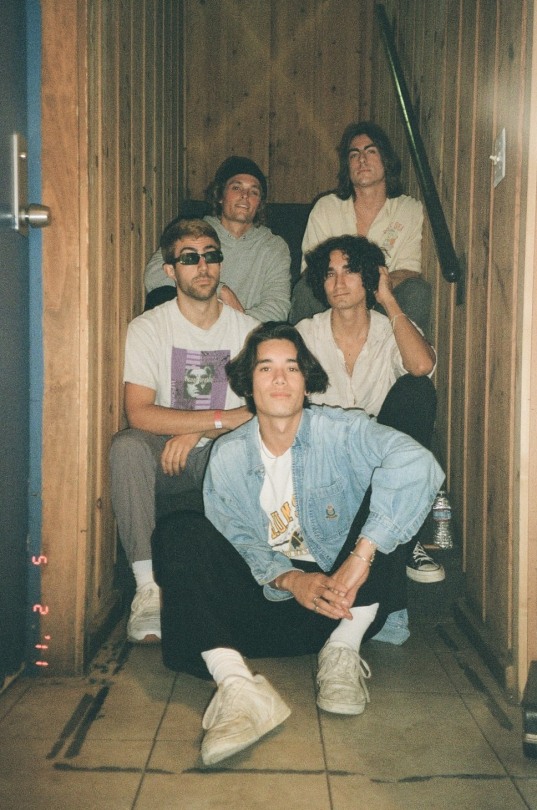
MIRRORLESS CAMERAS
Now to the bread and butter of cameras, the mirrorless camera. A mirrorless camera is pretty much a newer super compact DLSR without an internal mirror to reflect the image onto the sensor. *SIDENOTE* I was going to make this category mirrorless cameras and DLSR’s but in todays day you can get a mirrorless camera for just about as much as a DLSR so in my opinion DLSR’s are dying and not worth the buy. Mirrorless cameras are capable of creating incredible high-resolution photos while also able to film quality videos, some up to 4k 120FPS and higher. These cameras also have interchangeable lenses and you are able to customize every function on the camera so the possibilities of what you can create are endless. The downside to these cameras is their battery life and their price. Because these cameras use so much technology, they burn through the batteries pretty fast so if you are going for a photo shoot, you must be sure to bring backups. Mirrorless cameras are a decently new camera style and currently the highest performing model of camera on the market causing them to be a bit pricey. These cameras usually run between $600-$2500 for the camera body and then you must buy a lens on top of that. If you are willing to spend the money and are looking for a very high performing camera, I would 100% recommend getting a mirrorless camera. I promise you will not regret it and you will never go back to anything else.

2 notes
·
View notes
Note
wonderign if you can help since you mentioned you teach photography. i hope you dont mind. im just starting into photography. what camera do you suggest? for a newbie heehee. also im getting it second hand i cant afford new.
Of course I can help out. Thanks for asking and no I don't mind at all. I really get excited about photography and cameras so this question is splendid! For a newbie I would suggest going for the Fuji x100's. They're great little compact mirrorless cameras. The learning curve isn't that steep. I am sure you'd be able to get one and start shooting immediately. I'm suggesting these because they've been around awhile (I'm not sure which is older the x100v or the x100f) and the prices should have fallen a little on the 2nd hand market scene. Depending on your location too. Here the older one is prettyyyy steep in price still. I was actually considering one of these but I already have too many cameras. If you can find a good deal on either one I'd suggest getting into it.
6 notes
·
View notes
Link
$2,799.00 $ FujiFilm X-T30 II Mirrorless Camera with XF18-55mm Lens Kit - Silver https://nzdepot.co.nz/product/fujifilm-x-t30-ii-mirrorless-camera-with-xf18-55mm-lens-kit-silver/?feed_id=153198&_unique_id=6642c5dc4163a Features: FUJIFILM X-T30 II Mirrorless Camera with 18-55mm Lens (Silver) Offering powerful stills and video features, coupled with a compact, functional design, the FUJIFILM X-T30 II is a versatile mirrorless camera distinguished by advanced stills and video recording along with sleek and intuitive handling characteristics. Featuring a revised image sensor and processor, both high-resolution stills and 4K video can be recorded while an enhanced autofocus system delivers fast and accurate focusing performance. The 26.1MP APS-C-format X-Trans CMOS 4 image sensor features a back-illuminated design to promote greater image quality throughout the sensitivity range along with a 425-point phase-detection autofocus system […] #
0 notes
Text
Travel Photography Tips: Capturing Memories Around the World
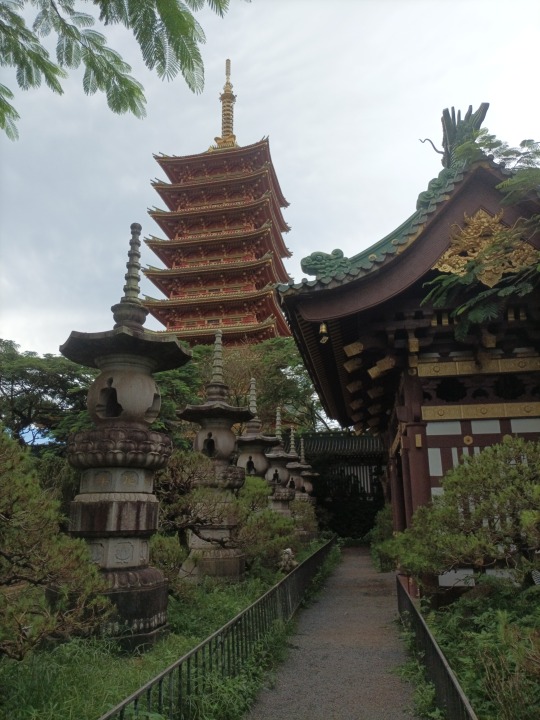
Travel Photography Tips
It's not only about visiting new places It's about experiencing different ways of life, meeting new people, and making memories that will last for a lifetime. What better way to keep these memories than with photography? If you're an experienced photographer or are just beginning your journey to capture what you love about your trip demands an amalgamation of technical proficiency as well as a creative eye for details.
In this article we'll go over some of the most important techniques for capturing beautiful travel pictures and answer many frequent questions, to benefit you get the most out of your photo-taking travels around the globe.
Research and Plan Ahead
Before you embark on your travels spend some time to study the destination you're planning to visit. Search for famous landmarks, hidden gems and other unique cultural experiences you shouldn't skip.
Make your plans in advance, taking into consideration the perfect timings of the day for photography, as well as any permits or restrictions that you'll need for certain areas.
Pack Light, but Bring the Essentials
When traveling equipment the less is usually more. Opt for a compact camera and lenses that can cover a variety of lengths. You could consider a camera with a mirrorless lens or a smartphone that comes with advanced camera capabilities to make it portable without sacrificing quality.
Be sure to bring additional batteries as well as memory cards and a sturdy tripod and lens cleaners to ensure that your equipment stays in good condition all the way through your trip.
Capture the Local Culture
One of the greatest pleasures of traveling photography is to capture the essence of places you visit. Make sure to capture candid moments that reflect your local lifestyle, tradition and ways of living. Engage with locals, be a part of their everyday activities, and search for original moments that tell a story with your photos.
Experiment with Composition
Composition is the key element to create visually appealing photographs. Explore different techniques such as leading lines framing or the law of threes in order to add depth and interest to your photographs. Find unique angles and perspectives to show the familiar scene in different perspective.
Pay Attention to Lighting
The lighting you choose can determine the quality of a photography. Utilize the golden hours --the soft warm light that is visible just after sunrise and prior to sunset, to take stunning photographs of landscapes and portraits with the natural beauty.
Avoid the harsh midday sunlight by seeking out the shaded areas, or with reflectors and diffusers to reduce the brightness.
Tell a Story
Every photo has an interesting narrative to share. When you're taking pictures of your adventures and adventures, documenting the beauty of your destination or highlighting the hardships of a community, try to convey emotion and inspire an impression of the place you are in through your photos.
Think about the story you wish to tell and make use of composition, lighting and subject matter help bring the story to life.
Edit Thoughtfully
Post-processing is an integral component of photography. Utilize editing software like Adobe Lightroom or Photoshop to improve your photos, fix any color balance or exposure issues, and also add your own artistic flair.
Remember that it is perfect to go to create natural-looking edits that compliment the original photo, rather than dominating it.
FAQs
Do I require costly camera equipment to capture great travel pictures?
Not necessarily, Although high-end cameras will certainly improve your photography however, it's about the way you use it, not the camera itself. A lot of competent photographers obtain impressive outcome using entry-level DSLRs and even phones. Make sure you master the fundamentals of lighting, composition, as well as storytelling. Then, you will be able to make stunning images together whatever camera you have.
How can I approach people to take street photography without violating the privacy of those I photograph?
Respect is essential when taking pictures of people in public areas. Always seek permission prior to photographing someone, particularly when they are the primary photographer. Begin by approaching them with a smile and explain the reason you think they are fascinating, and be ready to compromise if they do not. In most instances, people will be happy to photograph them in their image.
What are some suggestions to take better landscape pictures?
Be aware of the composition and perspective. Search for interesting elements in the foreground to give depth to your photos and play around with various angles and vantage points. Think about the weather and times of day, since stunning skies as well as soft diffused light can enhance your landscape photographs. Be sure to utilize the tripod for stability, and shoot with smaller apertures for the best coverage.
What do I keep my camera equipment in good order when traveling?
Get a durable camera bag or backpack that has cushioned compartments to guard your camera from scratches and bumps. Take your camera gear in a carry-on bag when you travel to avoid theft or damage. When you shoot in crowds or in unfamiliar areas Be aware of the surroundings around you and watch your camera equipment throughout the day.
Travel photography isn't just about taking stunning photos. It's about recording your journey as well as preserving your memories and sharing them with friends. If you follow these guidelines and being awed by an adventurous spirit you can create an amazing visual story of your journey that will be inspiring and enthralling for many years to follow. Grab your camera and pack your bags and begin a journey of discovery by using lenses of imagination.
Read the full article
0 notes
Text
Steven Rindner: Mastering the Art of Photographic Runs
Steven Rindner: Techniques and Tips for Photographic Running
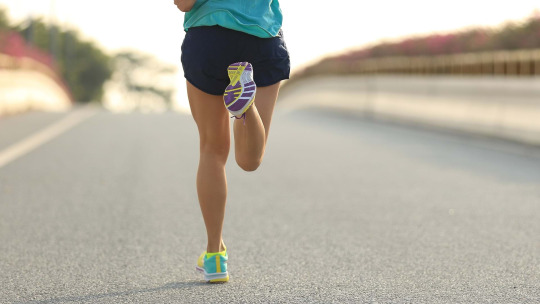
In the world of running, capturing the swift motion and vibrant energy through photography adds an artistic dimension to the physical challenge. Runners who are keen photographers often struggle to find the balance between enjoying their run and pausing to take that perfect shot. This blog delves into the best camera gear for runners, techniques to photograph movement effectively, and tips on how to integrate photography into your runs without breaking stride.
Choosing the Right Camera Gear
For passionate runners like Steven Rindner, the ideal camera gear must be lightweight, durable, and easy to handle. Traditional DSLR cameras, while excellent for their image quality, might not be the best choice due to their bulk and weight. Instead, action cameras and compact mirrorless cameras are more suited for the task. These devices offer a good balance between image quality and portability, which is crucial for on-the-move photography.
Action cameras, like the GoPro, are particularly well-suited for runners. They are rugged, weather-resistant, and can be mounted on various parts of the body or gear, allowing hands-free operation. Mirrorless cameras are another great option, as they provide similar image quality to DSLRs but are significantly lighter and smaller.
Whichever camera you choose, consider additional factors like battery life, storage capacity, and ease of use. It's also worthwhile to invest in a good-quality strap or harness to secure the camera, preventing any damage during the run.
Techniques for Photographing Movement
Capturing the essence of movement in photography requires a blend of technical skill and creative vision. Here are some techniques to help you get stunning shots while running:
Shutter Speed: A fast shutter speed is essential to freeze a runner in action. Aim for at least 1/500th of a second; this will help to capture the movement sharply without any blur. If you're aiming for a more artistic shot, such as capturing motion blur to emphasize speed, slow the shutter speed down to around 1/60th of a second and try panning with the runner's movement.
Burst Mode: Most modern cameras offer a burst mode feature, which takes multiple shots in rapid succession. This is incredibly useful for capturing the perfect moment when dealing with high-speed subjects like runners.
Wide Aperture: Using a wide aperture (low f-number) allows more light into the lens, which is ideal for maintaining fast shutter speeds, especially in lower light conditions. It also helps to create a shallow depth of field, keeping the runner in sharp focus while the background remains blurred.

Integrating Photography into Your Runs
Incorporating photography into your runs without too much interruption can be challenging, but with some planning, it can become a seamless part of your exercise routine:
Plan Your Route: Before you head out, plan your route around scenic spots or interesting backdrops. Knowing where you want to stop for photos can help you maintain a good running flow without frequent, abrupt stops.
Use Auto Settings: While manual settings offer greater control over the outcome of your images, using automated modes can save time. Set your camera to auto-focus and auto-exposure to capture good shots quickly.
Keep the Camera Accessible: Make sure your camera is easily accessible. Waist packs, chest harnesses, or hand grips can keep your camera handy without interfering with your run.
Be Mindful of Time: Allocate specific times during your run for photography. This could be during your warm-up, cool-down, or at predetermined points along the route. This helps keep the run enjoyable and focused without the photography becoming a distraction.
For active individuals like Steven Rindner, by merging the joys of running with your passion for photography, you can enhance your fitness routine and create stunning visual memories of your journeys. With the right gear, techniques, and approach, you can capture the fleeting moments of beauty in each stride.
0 notes
Text
Welcome to another episode of Rooster’s Photography Extravaganza
Previous chapters: story, photos, post
———
Here’s Bradley’ s cameras collection.
His most prized one: the Leica M6. It was his dad’s camera, the one with which Nick pictured most of Bradley’s childhood. Mav had told him once how his father got that camera by beating a fellow pilot at pool. The one and only time he actually won a game.
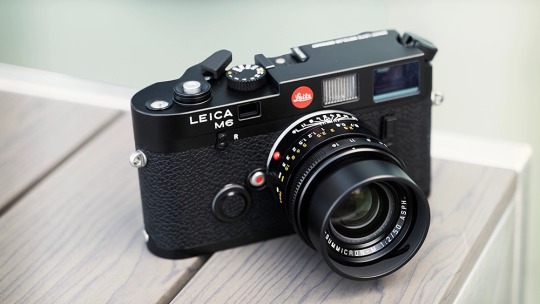
Next up we have the Fujifilm X-Pro2, Bradley’s favorite. It was his latest purchase before leaving his squadron in Japan. Compact, and yet so versatile and sharp.

Bradley’s first mirrorless: the Fujifilm X-T3.

Lastly, Bradley’s impulse purchase: the Fujifilm X-100f. After the suicide mission the urge to freeze in time people and memories was more pressuring than ever. So he wanted something to take everywhere with him, lightweight and compact, with a fixed lens.
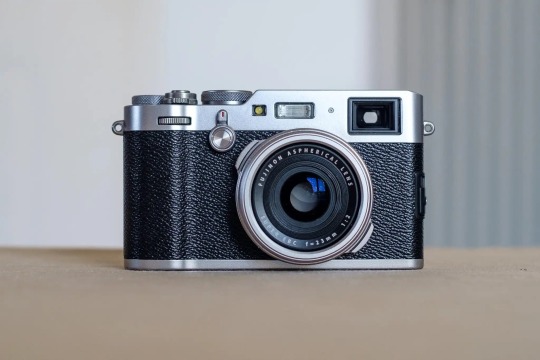
Just ‘cause I love giving contest
#photographer Bradley#photographer rooster#bradley bradshaw#hangster#rooster#sereshaw#top gun#top gun maverick#hangman
14 notes
·
View notes
Text
Choosing the Right Underwater Camera for Scuba Diving
Underwater cameras are specially designed to withstand the challenges of submersion, allowing divers to capture photos and videos beneath the surface. These cameras come in a variety of forms, including compact point-and-shoot models, mirrorless cameras, and DSLRs, each offering different features and capabilities.
Link : https://www.slideshare.net/slideshow/choosing-the-right-underwater-camera-for-scuba-diving/267730074
0 notes
Text
Indian Digital Camera Market Size, Trends, Challenges and Future Outlook

In a world increasingly dominated by smartphones, the Digital Camera Market in India stands as a testament to the enduring passion for capturing life's moments in stunning detail. This market encompasses a diverse range of cameras, from point-and-shoots to high-end DSLRs, catering to photography enthusiasts and professionals alike. The Indian digital camera market is a significant contributor to the global market. The market size was valued at USD 1.8 billion in 2023. This figure is projected to grow at a CAGR of 4.2%, reaching an estimated USD 2.4 billion by 2028.
Digital Camera Market Analysis: A Multifaceted Landscape
A thorough Digital Camera Market Analysis reveals a market segmented based on various criteria:
Camera Type:
Digital Still Camera Market: This segment comprises basic point-and-shoot cameras, offering user-friendly features and affordability. The digital still camera market is expected to witness a decline due to the increasing camera capabilities of smartphones.
DSLR Camera Market (Digital Single-Lens Reflex): DSLRs offer exceptional image quality and interchangeable lenses, catering to photography enthusiasts and professionals. The DSLR camera market is experiencing a shift towards mirrorless cameras due to their portability and advanced features.
Mirrorless Camera Market: Mirrorless cameras (MILCs) combine the image quality of DSLRs with a compact and lightweight design. The mirrorless camera market is witnessing significant growth due to their versatility and technological advancements.
Lens Type
Interchangeable Lens Camera (ILC) Market: This segment encompasses both DSLRs and mirrorless cameras, offering users the flexibility to swap lenses for different shooting scenarios. The ILC market is expected to witness the most significant growth due to the increasing popularity of mirrorless cameras.
Take a look : Forecasting the Camera Market Trends and Segmentation
Top Players: A Competitive Landscape
The Indian digital camera market is a competitive space with established international brands vying for market share. Some of the top players include:

Canon
Nikon
Sony
Fujifilm
Panasonic
These companies are constantly innovating and introducing new models with advanced features like high megapixel counts, faster autofocus, and improved low-light performance. However, the rise of smartphone photography has led to a decline in market share for some traditional camera brands like Olympus, which exited the camera business in 2020.
Digital Camera Market Trends: Shaping the Future of Photography
Several key trends are shaping the future of the Indian digital camera market:
Smartphone Integration: The increasing sophistication of smartphone cameras is impacting the digital camera market. However, smartphones are unlikely to completely replace dedicated cameras. Instead, we are likely to see a convergence where smartphones cater to casual photography, while digital cameras remain the preferred choice for serious photographers and enthusiasts.
Focus on Full-Frame Cameras: Full-frame cameras offer superior image quality and low-light performance compared to crop-sensor cameras. The full-frame camera market is expected to see steady growth in India, driven by the increasing affordability of these cameras and rising aspirations of amateur photographers.
Rise of Online Retail: The growing popularity of online shopping platforms is influencing consumer buying behavior. Online retailers offer a wider selection of cameras and lenses at competitive prices, making it easier for customers to compare and purchase products.
Focus on Content Creation: The rise of social media platforms and content creation has fueled the demand for vlogging and video recording capabilities in cameras. Manufacturers are responding to this trend by introducing models with improved video features and functionalities.
Challenges and Considerations for the Future
Despite the promising future, the digital camera market in India faces some challenges:
Competition from Smartphones: As smartphone camera technology continues to improve, it will remain a significant competitor to entry-level and point-and-shoot digital cameras. Manufacturers need to focus on innovation and highlighting the unique advantages of dedicated cameras over smartphones, such as superior image quality, interchangeable lenses, and better ergonomics.
Economic Factors: Fluctuations in exchange rates and rising inflation can impact the affordability of digital cameras, especially high-end models. Manufacturers may need to explore strategies such as localized production or offering financing options to make cameras more accessible to a wider audience.
Shifting Consumer Preferences: Consumer preferences in the camera market are constantly evolving. Manufacturers need to stay up-to-date with these trends and adapt their product offerings accordingly. For example, the growing interest in videography necessitates cameras with robust video recording capabilities.
Camera Market Future Outlook: A Focus on Innovation and Specialization
The Indian camera market future outlook is expected to witness moderate growth in the coming years, reaching an estimated USD 2.4 billion by 2028. We can anticipate a future where:
Artificial Intelligence (AI) Integration: AI features like scene recognition and object tracking are likely to be incorporated into future camera models, making photography more intuitive and user-friendly.
Focus on Specialization: Camera manufacturers are expected to focus on specialized cameras catering to specific photography niches like wildlife photography, astrophotography, and sports photography. This will cater to the evolving needs of professional and enthusiast photographers.
Increased Focus on After-Sales Services: With the growing complexity of cameras, manufacturers may prioritize providing comprehensive after-sales services like training workshops and technical support to enhance customer satisfaction and brand loyalty.
Conclusion: Capturing the Future of Photography
The digital camera market in India is a vibrant and evolving landscape. With increasing disposable income, rising internet penetration, and a growing passion for photography, the market is poised for continued growth. While smartphone photography poses a challenge, dedicated cameras will remain relevant for serious photographers and enthusiasts who value superior image quality, creative control, and specialized features. By embracing innovation, focusing on niche markets, and providing excellent customer service, camera manufacturers can navigate the changing landscape and ensure the future of photography in India remains bright.
You can also read more at: Camera Market Trends, Segmentation and Forecast (2023-2030)
#digital camera in india#Digital Camera Market#digital camera market analysis#digital camera market growth#digital camera market share#digital camera market size#digital camera market segmentation#digital still camera market#dslr camera market#interchangeable lens camera market#mirrorless camera market#digital camera market trends#Top Players#Camera Market Future Outlook
1 note
·
View note